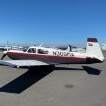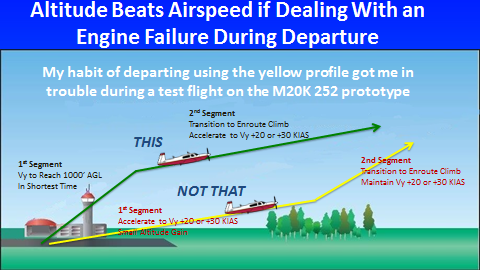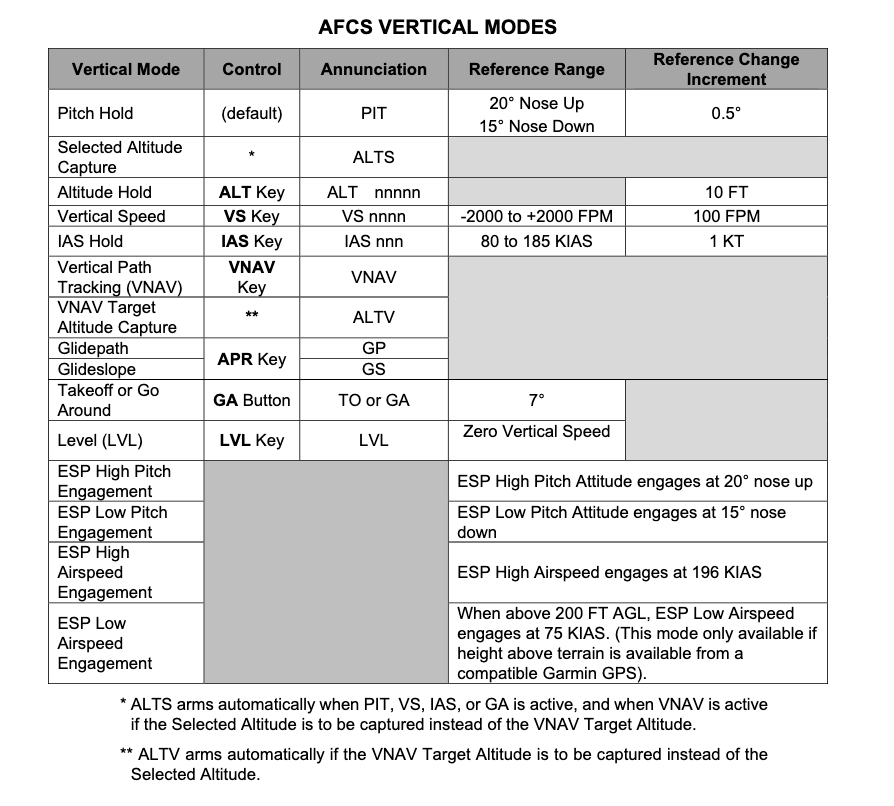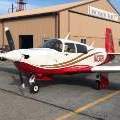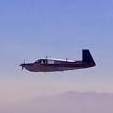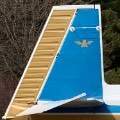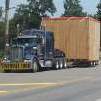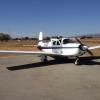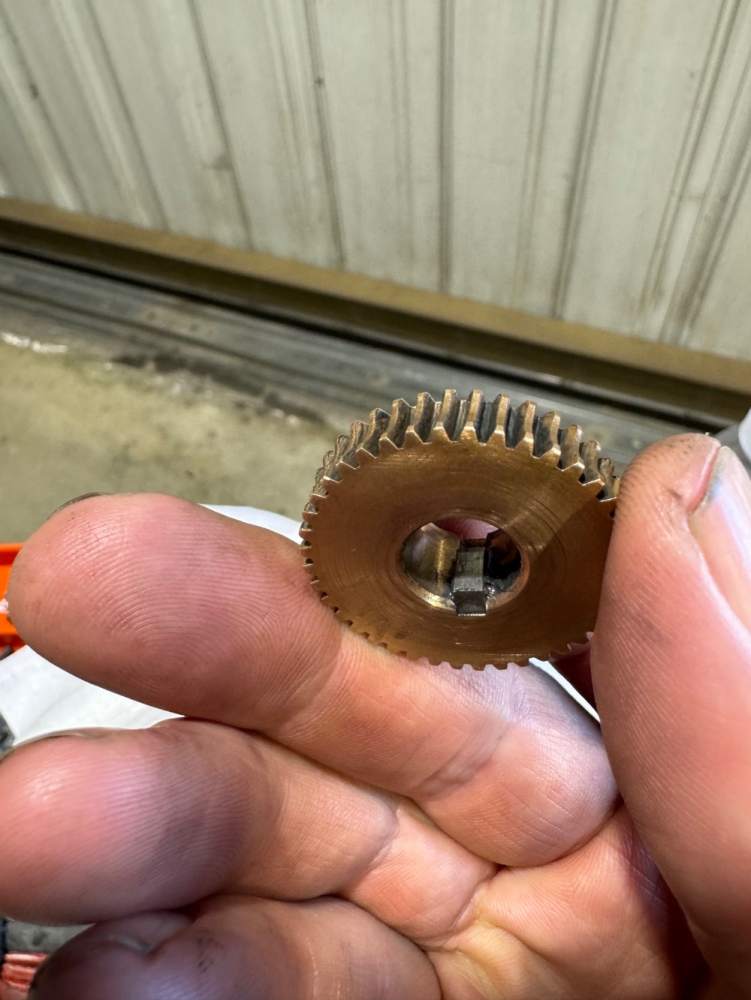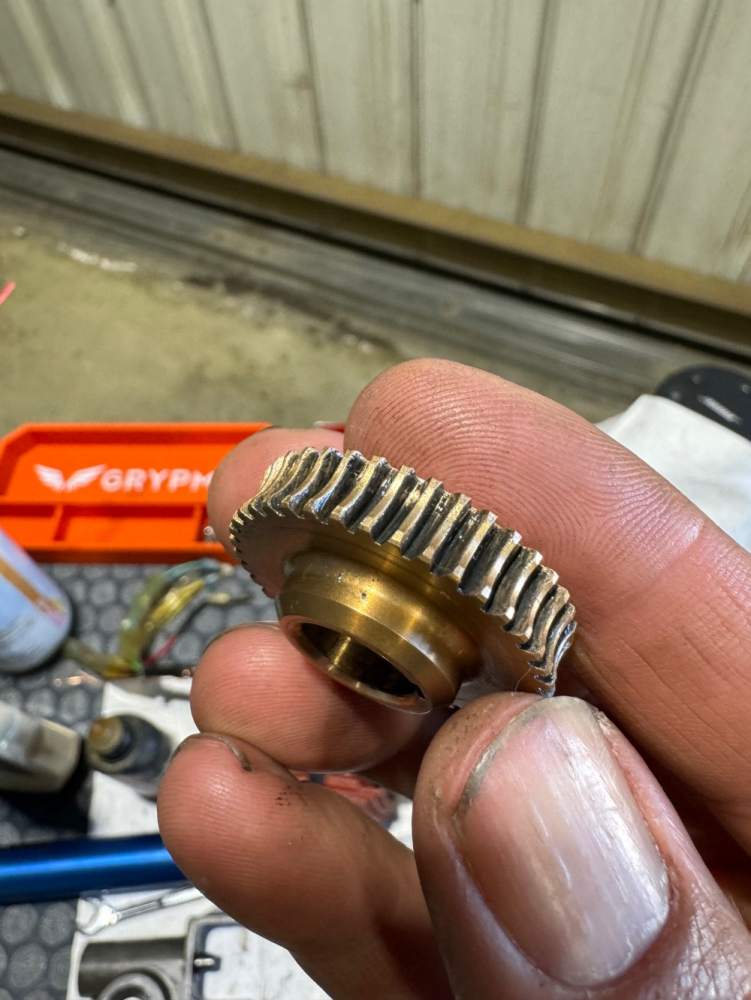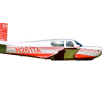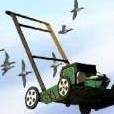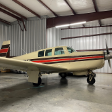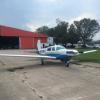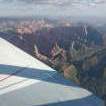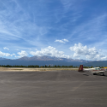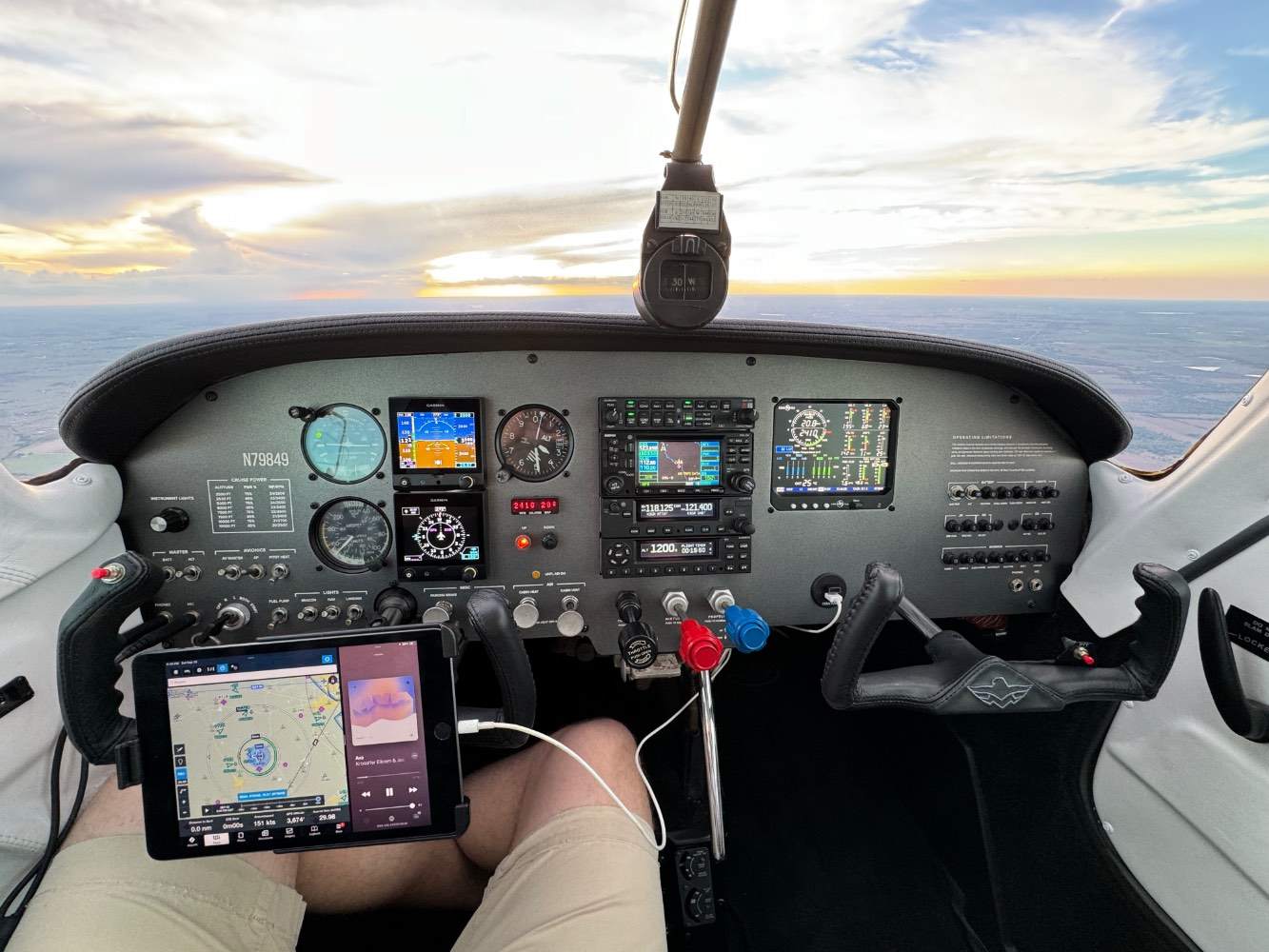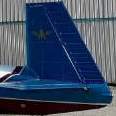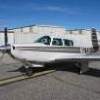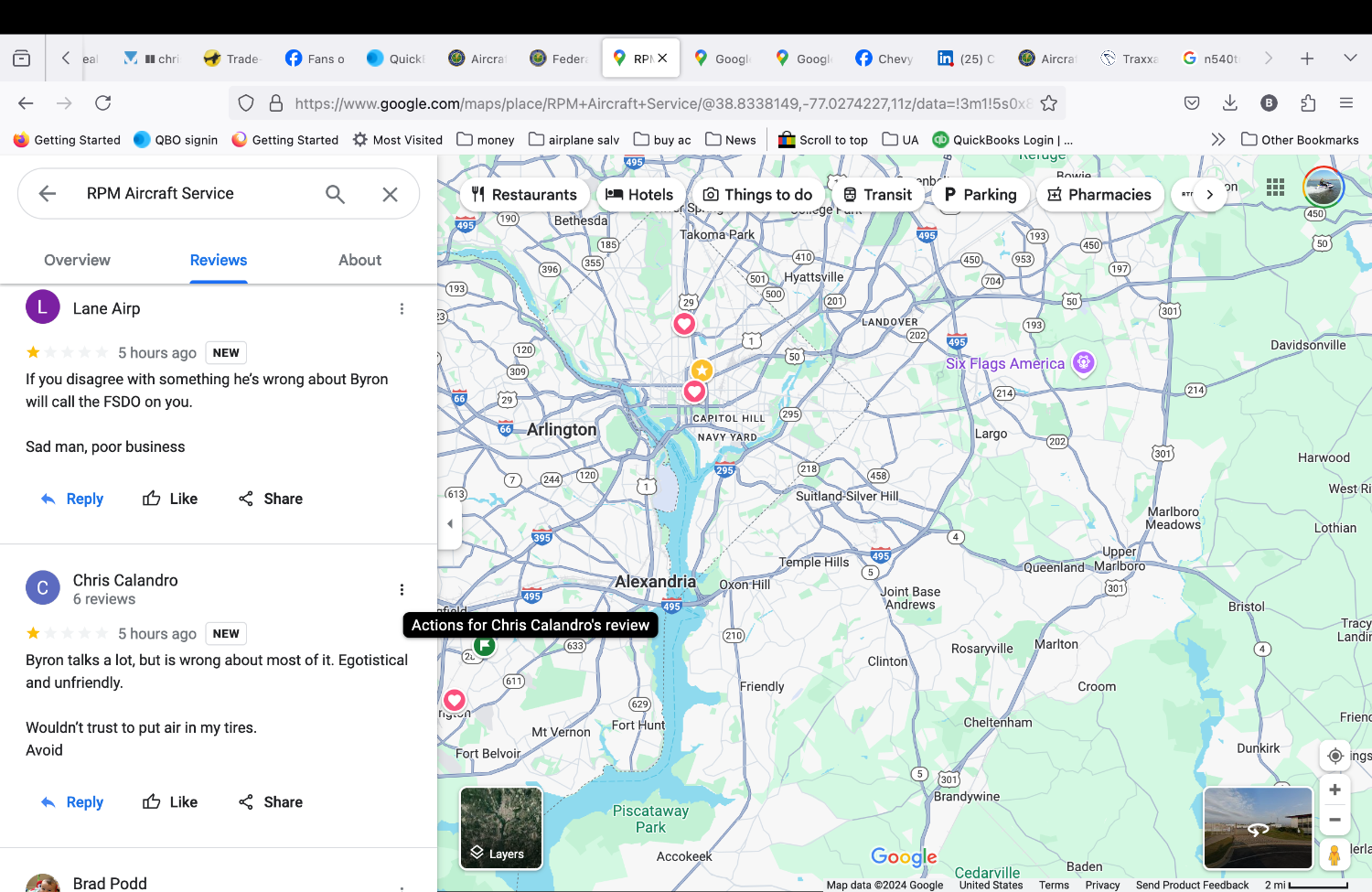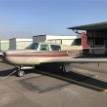Leaderboard
Popular Content
Showing content with the highest reputation on 09/17/2024 in all areas
-
Most parameters of the GFC 500 are adjustable in G3X configuration mode including the GA pitch attitude. The STC addendum for each aircraft type specifies how these settings are to be entered for a specific aircraft. For the Mooneys, the GA attitude is 7 deg. That's an initial setting for the go around. It is expected that you will soon chose a different vertical mode, usually IAS.3 points
-
+1. I think of the TOGA as a transition mode. You're never in it long, but it gets you away from the ground safely. If you push the TOGA button on an approach, you'll soon need to either configure heading or GPS mode, and will be further tailoring your climb out and altitude capture. If on take off, I'm usually climbing out in IAS so that I can keep my speed exactly where I want it. With a fixed pitch climb your airspeed will continue to decay as you get higher (probably not what would be ideal in any situation). Bob Kromer (Mooney test pilot and former executive VP/general manager) presented this slide (above) at MooneyMax this year, as well as at previous MooneySummits. Basic gist, get some altitude fast, then configure for a faster cruise climb for better cooling, better speeds, and only slight to moderate change in your climb rate. I find the TOGA roughly prescribes to this. I've also found that my VSI climb rate isn't as impacted by a 115-120kt climb as you'd expect plus your forward speed is much better and much more airflow over the engine. So for what it's worth, on takeoff I quickly move to an IAS climb shortly after departure (above 1000 feet AGL or so) and typically start off in HDG mode. For missed approach, I press the TOGA button which allows me to transition the aircraft/engine followed by navigation to the missed and then transition from TOGA button mode to the climb out and missed approach.2 points
-
2 points
-
2 points
-
I dunno all these terms but simply put when I go missed or around, I pitch up to the AOA that gives best angle or best rate of climb. No speeds, flight directors, or buttons to fiddle with.2 points
-
You'd probably have gotten low batt warnings if the battery failed rather than No Batt, which sounds like it maybe became disconnected or is loose. As mentioned, they're easy to remove/replace, so that's worth trying.2 points
-
In the 9 years of owning my Mooney, I’ve only had one annual that was not owner assist. That one and only time was at a premier Mooney service center. The aircraft was there 10 weeks and my post annual inspection revealed; 9 quarts of oil in an 8 quart IO 360, non functional toe brakes as the brake system had not been properly bled, pilots window hinges installed backwards, a Craftsman 9/16 wrench on the engine and two missing inspection plates from the bottom of the wings. With that said, I don’t have a specific post-annual checklist as I only do owner assist. However, from my experience, I believe it’s critical that you go beyond a normal preflight, as others have pointed out, and look it over THROUGHLY.2 points
-
AIRTEX interiors are not the best, however the price was good and samples I received were nice enough so i ordered carpet kit 5-6 years ago. It's still looking good and I'm pleased with it. One thing to point out is that is (probably) 10lb lighter then the old wool carpet I had for years. I always wondered if the old one was really so heavy or just collected all the dirt and sand in it.2 points
-
It is a good idea to take the SFRA training even if you are filing IFR as there are some differences in how you cancel. Summary: Don’t ever squawk 1200 inside the SFRA. Suggestion: Inside the SFRA don’t cancel IFR until after landing.2 points
-
Keep in mind the original poster @Speed Merchant (Curt LoPresti) is looking for the "best carpet kit" for his 201. He already tried a local shop that couldn't do it to his satisfaction (no surging machine for the edges). He's not looking for auto carpeting. He hasn't skimped on anything so far in renewing this M20J 201. Not only is this his personal airplane, but I'm guessing it's a bit of a tribute to his father Roy LoPresti (father of the M20J 201). https://en.wikipedia.org/wiki/Roy_LoPresti1 point
-
Hopefully your IA has the Mooney Maintenance Manual for a Mooney 231. If he doesn't he has no business rigging your landing gear, or even doing your annual for that matter. Is this the same person who replaced your nose gear a couple years ago?1 point
-
@PT20J I talked to Trek as well. No help. I had the unit exchanged under that SB and even the new one they sent me still was defective. It makes no sense, bc the only think commanding the unit to use it’s own battery, ought to be the internal unit itself. Any wire connections going into it should have nothing to do with that but alas here I am. and to clarify, I haven’t done it enough times to say without margin of error that pulling circuit breakers helps. I always walk away from the plane assuming I’ll be flying it in the next couple days but you know how idle time goes. You don’t necessarily plan it. I need to just pull them every time to really test the theory. in theory, pull BOTH units (top and bottom) CB, AND the gad 29. Apparently the gad29 should have its own circuit breaker but mine does not and I’m not exactly sure which breaker it lives on. In my anecdotal trials, I’ve pulled everything nav related. It seemed to work but hard to say without a few good long weeks with the right CBs pulled.1 point
-
1 point
-
Mooney landing gear isn’t necessarily “vertical” when extended. What matters is that the pre-loads are correct by using the real Mooney gear rigging tools. If your mechanic doesn’t have the actual tool, please don’t let him go adjusting things just to make it “look right”. And if he does, then make sure he has enough insurance to pay for a new prop and engine tear down inspection when the gear collapses. Yes, this sounds extreme but it is accurate. Mooneys have been totaled by insurance companies because the mechanic didn’t have experience working on them and they thought they could rig the gear. If you have electric gear, it’s only one tool for the mains. If you have manual gear you will need both tools.1 point
-
And, nearly 7 years into ownership my vacuum driven DG and AI soldier on without any issues...1 point
-
Thanks for the photos. I'm no ME, but I believe the scalloping is by design for a 90 degree worm gear. I'd hate to think some A&Ps are condemning gear sets over that! As you said, it's the backlash that is critical.1 point
-
So, you missed the part where it came from the factory with a J-bar and then upgraded to electric1 point
-
1 point
-
The following Mooney models are carbureted: M20 M20A M20B M20C M20D M20G Everything else is fuel injected If you know the engine model, O-XXX is carbureted, IO-XXX is fuel injected (that's the "I" in the engine number).1 point
-
I'm starting to get excited. Only one problem is keeping it out of annual. The main gear when extended is not verticle. We are going to put it on jacks and investigate that. It locks in position and has new pucks. I'm guessing this will be obvious when we start investigating it. The other problem is a minor oil leak. I don't know if it leaks with the engine running, but when parked it leaks onto the tire. My AI said it's coming from the internal altornator or oil filter adapter. Anyone else fought this problem?1 point
-
Garmin and all the other avionics companies have the poorest interface with the pilot. The boxes we use in the airlines are user friendly and very intuitive..simple and monochrome. Route page, legs page, and holding page and just a few others for basic information which is all you need. How many thousands of flights around the globe get from A to B using them and it works. Would be great to have the same simple interface in all cockpits then everyone is more or less on the same page. Why do these GA avionics companies all try to re invent the wheel......It's not needed....and makes flying less safe...Even installing an approach is complicated...Install, install activate etc etc etc...1 point
-
I redid mine a few years ago. It is just like yours. Mine had some mystery white sealant. I cleaned off all the old sealant and resealed it with tank sealant.1 point
-
RTV would probably work fine there. You can also get the foam sealing strips at Home Despot/Lowe's/ACE, etc.1 point
-
I believe that setting is mandatory and not adjustable. At least for the GFC 500 its called out in the STC for the airframe. Page 7-5: https://static.garmin.com/pumac/190-02291-20_02.pdf1 point
-
AOA is a much better target than attitude. Heavy Mooney or high DA climbs at a pretty flat attitude compared to light.1 point
-
1 point
-
You could also try the old take it off and put it back on deal. They are easy to remove, might be worth a try. I would personally call Garmin at that point and ask how they expect a battery to go bad within 9 months on a brand new install. Its completely possible it was old stock sitting on the shelf. Best of luck!1 point
-
I ordered a kit from SCS and had similar issues related to my plane having some parts of a 252 interior. After I paid, with a note that said I wasn't sure which kit I needed, they sent me their shop drawings from both kits. We measured against the plane and sent them a list of alterations / changes. I ended up needing some pieces from the 231 kit, some from the 252 kit, and some custom altered from one kit or the other. They did it all and did a really good job, just a little minor trimming was needed. Took a month or two to get the kit this way but I'm glad we did it.1 point
-
Would it be better (faster) to get the parts for a Johnson bar? I don’t know if the conversion is possible but I would think parts would be available.1 point
-
I love my Mooney but you might want to consider a Cessna 182. They can haul a lot, are reasonably fast and are great for operating off less improved runways. 1800 feet is tight for most Mooneys but wouldn’t be an issue for a Cessna 182. Getting in and out is much easier as well, I’m still working on making a graceful entrance into my Mooney, I’ve come close a couple times and think I’ll get it eventually. I had a bunch of goals I set for myself before I bought a plane. I did all of them and then set a few extra goals. Once I did the extra ones I went ahead with buying a plane. I get the desire to place conditions on something you want but don’t go overboard with it.1 point
-
I haven't been everywhere in our Mooney, but I've been around a bit. After 5 years of random FBOs towing us around while on trips our local maintenance shop bent metal when towing it over for an oil change. They're taking care of us but it was the last thing I ever expected. After a few trips to random airports I even pretty quickly stopped telling FBOs about the turning radius cause they all acted like they were aware so I felt like I was being a bit over protective.1 point
-
Duncan said I can order and get it. My avionics shop said they can get it also. I may wait a bit to see if the new STC gets done first. Once I pull the trigger, I’l let everyone know… -Don1 point
-
1 point
-
Bob Wagstaff at K&W Aviation in Laporte Texas, T41. I worked out there with Bob and his crew for the better part of 10 years and they know Mooneys quite well. We learned together1 point
-
1 point
-
1 point
-
Click into any of those categories and then click the center filter button at the top, you can filter on many things once you do that.1 point
-
1 point
-
After some time and research, finally booked a time to get an AeroCruze for my plane. Wanted a Garmin but the Kit/install price for the AeroCruze is about the price of just the Garmin unit not installed. For what I need, the AeroCruze will do it. I’d rather have an autopilot vs waiting another year (2026). I have other plans to get tanks sealed vs patch so I figure I could budget and get things taken care of and still have an autopilot. Going with the flat pack and plans are to mount it above the audio panel. Have to wait until April of next year but this will pretty much complete the Avionics. BTW, just picked up a Dynon D3 Portable as a back up. Going to mount that up soon. -Don1 point
-
You'll want to read up on FAR 21.197 on Special Flight Permits. The problem, like anything FAA, is that how that process works will be up to the local FSDO (where the plane is at, not where you are). It's not a tough process to go through, but the FSDO may not (probably won't) sign off on a cross country ferry for your convenience. If the plane were stuck in the middle of nowhere without access to maintenance - then yes. I'd do a little research on a compelling case to warrant a cross country flight. They're going to be thinking safety, not worried at all about saving you $. Step 1 is getting an A&P (does not need to be an IA) to sign off that the aircraft is safe. That might be hard to get. I'm pretty sure that you have show that all ADs have been complied with (check the FAR for that). That A&P will do a pretty thorough inspection, but not an annual. Their livelihood is on the line, so you might not find a ton of guys lining up for that action. Step 2 is getting the FSDO to approve your request. Step 3 is getting permission from your insurance underwriter. Step 4 is the easy part - day VFR flight to your ferry location. IMO, it would be way easier to find a couple of local IAs, let them know you need to get the aircraft back in the sky under annual. But, you know how that annual lottery goes. Could hit paydirt with a $2500 annual, or hit craps with $12K. We've all been there...1 point
-
Highly recommend owner assisted annual, make it clear up front that you do not expect any discount, you will typically discover things that the AP/IA does not or does not deem important and you can fix them in addition to what he does, two sets of eyes see more than one, when decisions are to be made you are right there, it helps to bring bagels, cash and other valuable consideration, the best annuals I have ever had were with Brian Kendrick in San Marcos, he sees things that other people don't and he test flies the airplane what most A&P IAs are not able to do, he does not need any assistance, with most other A&P IAs assistance is helpful and welcome, sometimes you have to nudge yourself in, convince the guy that you will not cut into his profits and not cause any trouble but want to be part of the solution. Once a relationship is established the guy will work on your airplane instead of working on airplanes of owners that have pissed him off.1 point
-
Only because you asked - the simple answer is no. As mentioned above, you have a number of items really impacting your plane. Not in a 1-n, but the stand out issues are: The engine is near TBO. That's ok for many people, but lenders won't touch a motor 85% through it's expected life. So, you're now dealing with an all cash buyer and that will really limit the market. It's out of annual. Same as above, no lender, and most cash buyers are will not want to deal with the requirements to get it home just to find out what kind of project they have. While I appreciate your transparency (and that's a good thing), what you've articulated is a project plane with the potential to be a MAJOR project even for someone that's willing to take it on. Realistically, you've eliminated 90-95% of the market. There are a lot of pre-J's that are ready to fly away, have motor life left, and don't have a bunch of asterisks accompanying the purchase that are priced marginally above what you're asking. You're going to have to find someone that's willing to sign up for whatever they discover, and that's a risky proposition. I can't see anyone spending much more than what the collective parts are worth, yet hoping that with minimal finds, they can get her airworthy for $10-20K. I won't make a guess what that figure is, but it's well below your asking.1 point
-
Owner assisted annuals are the best, but are not an option with my new IA. They let me see everything, and participate in decisions, sometimes pointing out things to watch or to plan for next year. Now, I just have a thorough preflight, checking everything external and under the cowl carefully. Inside, I make sure my seat locks in place, then check the position of every switch and button in the cockpit. Then I make sure to.hit every item on every checklist from Pre-Start to Takeoff. Make one lap around the field, then a landing to full stop. THEN I fly home, all of 15 minutes from wheels up to pattern entry. Followed by a walk around and leak check.1 point
-
Not sure why you added this to this thread, but I'm disappointed that someone has been sabotaging your business's online reviews.1 point
-
1 point
-
1 point
-
Go Velocity!!! I've got a partially completed XL-RG that I've been ignoring for a long time until I have more time to work on it.1 point
-
Confession - I literally ripped off the nose gear in a towing incident. During heavy wet snowfall winter I was moving my airplane from it's tie down area so the airport snow plow crew could remove the ice dams from the front and back of my aircraft which was created by the previous plower's work. After shoveling the crusted ice/snow I towed my aircraft with my vehicle and I did not realize that one main tire was frozen to the ground by melted snow and refreezing. So when I was pulling the aircraft it jackknifed so hard it spun the other main tire around and twisted the nose gear clear off and the prop struck the ground. Yep - it resulted in an insurance claim for repair and an ENGINE/PROP IRAN. Hard lesson learned from my ignorance! Do I qualify for a "most stupid aircraft act"? My pilot buddies thought so at the time!0 points

